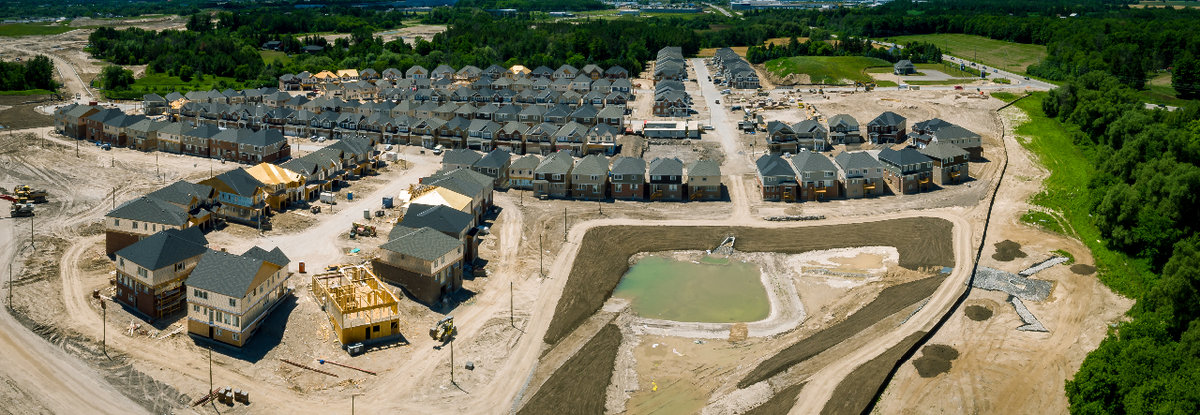
There is a lot more to creek design than meets the eye. When our Water Resources team was tasked with taking a Cambridge stormwater pond offline to make way for a more diverse creek ecosystem, they knew it would be a challenge. Add in the removal of a 400m stretch of road and you’ve got the makings of a really complex water resources project.
The on-line pond had been used for decades to capture runoff from the adjacent agricultural land, but had also been recommended for removal for over 20 years. When the Hunt Club Valley Estates subdivision broke ground on the old farmland around the pond, we worked with GSP Group to devise a plan to take the pond offline and create a more cohesive environment for the wildlife in the area. Also important was restoring the coldwater characteristics of the creek, which had been negatively impacted by the existing pond. We worked closely with the Grand River Conservation Authority to ensure our plan allocated enough land for enhancements, restoration, and floodplain.
Removing the pond meant the existing fish habitat was lost so our Water Resources team restored a wetland area in another portion of the site to ensure an equivalent habitat was reintroduced. A 400m stretch of Briardean Road bisected the wetland and, to restore the wetland into a single contiguous feature, that portion of Briardean Road was removed. “Proposing the removal of a section of road isn’t something we regularly do, but in this case, it was what was best for the wetland,” says Brian Verspagen, leader of our Water Resources team. “Excavating out the road made it possible for us to turn the whole area back into a unified wetland habitat and reconnect Middle Creek so it could stay connected with the Speed River.”
With the road out of the way and the two sides of the wetland reconnected, the next major component of the project was the restoration of Middle Creek through the former farm pond. “We had to design a path for the creek to get from one end to the other without the pond in the middle, while also navigating a 1.5-metre change in elevation,” says Brian. “Instead of doing a 1.5-metre drop in one spot with a waterfall, which would make it impossible for fish to migrate up the creek, our team introduced a series of meanders (bends) with pools and riffles changing the grade of the creek just six inches at a time.” By studying the types of fish that would commonly live in this creek, the team knew the fish would have a spurt speed that could handle a six-inch incline over a two-metre distance if they had adequate rest time in a pool afterward.
The pool and riffle sequence also had an additional design advantage. “Middle Creek is a cold-water creek, which is quite rare for the area, so keeping the temperature of the creek down was important,” says Brian. “Running in and out of the shallow pond had been warming up the creek water, making it difficult for aquatic life to thrive. Each riffle section oxygenates the water, causing evaporation. The energy the water uses to change state from a fluid to a vapour cools it.” This means even if the water warms up in the pool sections, it can cool down half a degree when it passes over a riffle, rebalancing the water temperature.
Within the pools, the team introduced areas that would enable the fish to breed and safely create nests for their eggs and fry. These spaces included fallen trees and root wads that would protect the fish from predators like raccoons, while also shading them from the sun. Overflow ponds were also introduced, creating the perfect habitat for the many frogs that live in the area.
This project has revitalized an underused ecosystem and breathed new aquatic life into the area for the whole neighbourhood to enjoy.

